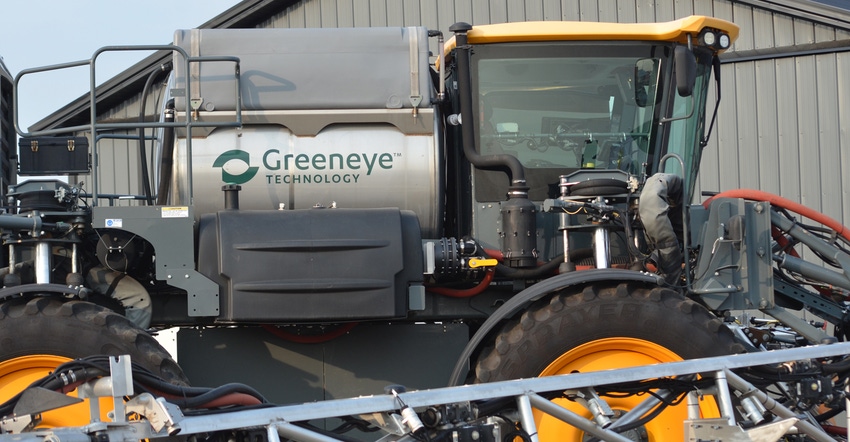
Precision spraying technology has been on the horizon for some time. Farmers have been anxious for the technology because it can save on pesticide costs and is more environmentally friendly.
One new system launched this past growing season from Greeneye Technology, based in Tel Aviv, Israel, has achieved a breakthrough from a combination of hardware and proprietary intelligence that can differentiate between crops and weeds in real time.
This makes Greeneye the first company to commercially launch a precision spraying system in the U.S. that is suited for both pre- and postemergence spraying.
The new technology, known as Greeneye’s selective spray system, turns every sprayer into a smart machine with seamless integration, allowing the machine to detect weeds and spray them precisely through individually controlled nozzles in real time as the machine travels up to 15 mph, day or night, through the field.
UNL trials
University of Nebraska-Lincoln researchers put this new technology to the test this past season, and the results are eye-opening. Comparing the Greeneye proprietary AI precision spraying system against broadcast application of herbicides, the UNL results found a 94% reduction in burndown herbicide use during preemergence spraying compared to broadcast application, with a cost saving of $24.70 per acre.
During postemergence spraying of a nonresidual herbicide, there was an 87% reduction compared to broadcast application, with a cost savings of $40.50 per acre. The levels of efficacy compared to broadcast application were the same or similar. Weed control on broadleaf weeds was the same, and on grasses, was slightly less but similar to broadcast methods.
Overall, the residual and nonresidual herbicide cost for Greeneye application in the UNL trials was $40.60 per acre, compared to $105.80 per acre on the broadcast treatment, resulting in a total savings of $65.20 per acre.
“We are delighted to announce the results of the UNL field trial, which provide the strongest proof yet of how our precision spraying technology is helping to transform not only farmers’ profitability, but also their productivity,” Nadav Bocher, CEO of Greeneye, said in a Aug. 17 news release.
“Precision spraying has long been a desired concept for farmers. However, while achieving a significant reduction in herbicide use is hugely compelling, cutting costs and reducing volume use of chemicals is not enough to drive mainstream adoption. Weed control efficacy must also be on par with broadcast treatments.”
“For our first commercial season, we worked with a number of farmers in the Henderson and York, Neb., areas, using our own self-propelled sprayers to provide custom spraying,” said David Greer, Greeneye sales representative based in Sioux Falls, S.D. “To date, our focus has been on corn and soybean states like Nebraska, Iowa and Illinois in 2022. However, we will be launching in other agriculture states in 2023.”
Learn more at greeneye.ag.
About the Author(s)
You May Also Like






